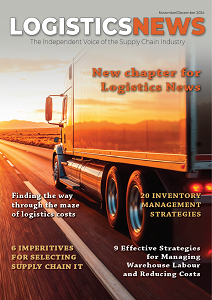The rest of 2022 is expected to be a key period for the manufacturing industry as agility and adaptability become the focus, especially when dealing with disrupted supply chains. Driving this will be harnessing intelligent data across operations.
Given the events of the past two years, it should hardly come as a surprise that local manufacturers will turn their focus inwards to improve operational efficiencies. But with renewed public interest in sustainability and the environment as well as increasingly complex environmental, social and governance (ESG) reporting requirements, manufacturers must explore ways of leveraging intelligent data to not only improve their efficiencies but also help them to meet their compliance responsibilities.
This is where intelligent data must drive the adoption of data-based technology and data-driven insights as the mechanisms to monitor the supply chain in real-time to optimise the operational environment. Having increased visibility of the asset lines will enable manufacturers to refocus their decision-making and find ways of delivering on sustainability targets while improving their revenue potential and profitability.
Beyond the basics
Manufacturers who have already made extensive investments in enterprise risk management (ERP), enterprise asset management (EAM) and scheduling optimisation systems might be unwilling to examine the requirements of intelligent data-driven systems for fear of adding to the cost and complexity of the existing solution real estate. The reality is that most of the platforms they have in place are adding to data fragmentation and not reducing it.
As a means of overcoming this, the priority must turn to implement a centralised data infrastructure. This will enable decision-makers to have a universal view of all the manufacturing processes and in this way embrace the true power that intelligent data can provide.
With global supply chains still under pressure, being able to unlock the potential of intelligent data will provide manufacturers with the foresight they need to proactively manage any future uncertainties. Armed with this intelligent data, organisations can inject improved oversight to product life cycle management across the supply chain.
And while this might sound counter-intuitive, introducing an intelligent data layer does not have to be a difficult undertaking. It becomes the critical step in ensuring data becomes centralised to deliver the visibility required across the manufacturing footprint. And with this in place, local operations will get the competitive advantage essential for a digitally driven marketplace while still supporting the demand for sustainable business practices.
Becoming streamlined
It becomes important to move beyond complexity and disparity and focus on how best to gain real-time oversight of processes. This requires the priority to be on streamlining processes, centralising data and optimising production to reduce manual intervention that can often be blamed for errors.
As part of the transition to an intelligent detailed environment, digital infrastructure must be put in place that incorporates the likes of artificial intelligence, machine learning, ERP, EAM, and manufacturing execution systems (MES). This will contribute to improved transparency which the manufacturer can use to extend product and asset life cycles, reduce waste and provide feedback on the areas where the circular economy can be improved upon.
Manufacturers must caution against viewing this as a once-off process. Intelligent data and the associated digital transformation of traditional systems must be ongoing. It must be considered a motion of business that forms part of the manufacturer’s own life cycle. Just as it continued to grow and expand and develop new products and services, so too must the intelligent data environment be adapted for shifts in technology.
Agreeing on it
Business buy-in becomes the starting point to affecting this change at scale. The best technology and approaches available can do little to change how the manufacturer operates if there is no executive drive to make things work.
Integrating intelligent data with more advanced technologies while still delivering on the existing platform investments will require a careful balancing act. But if manufacturers are to deliver value in today’s digital market, then they must find ways to do so, especially given the expected push to grow business for the remainder of 2022. •

.jpg)


